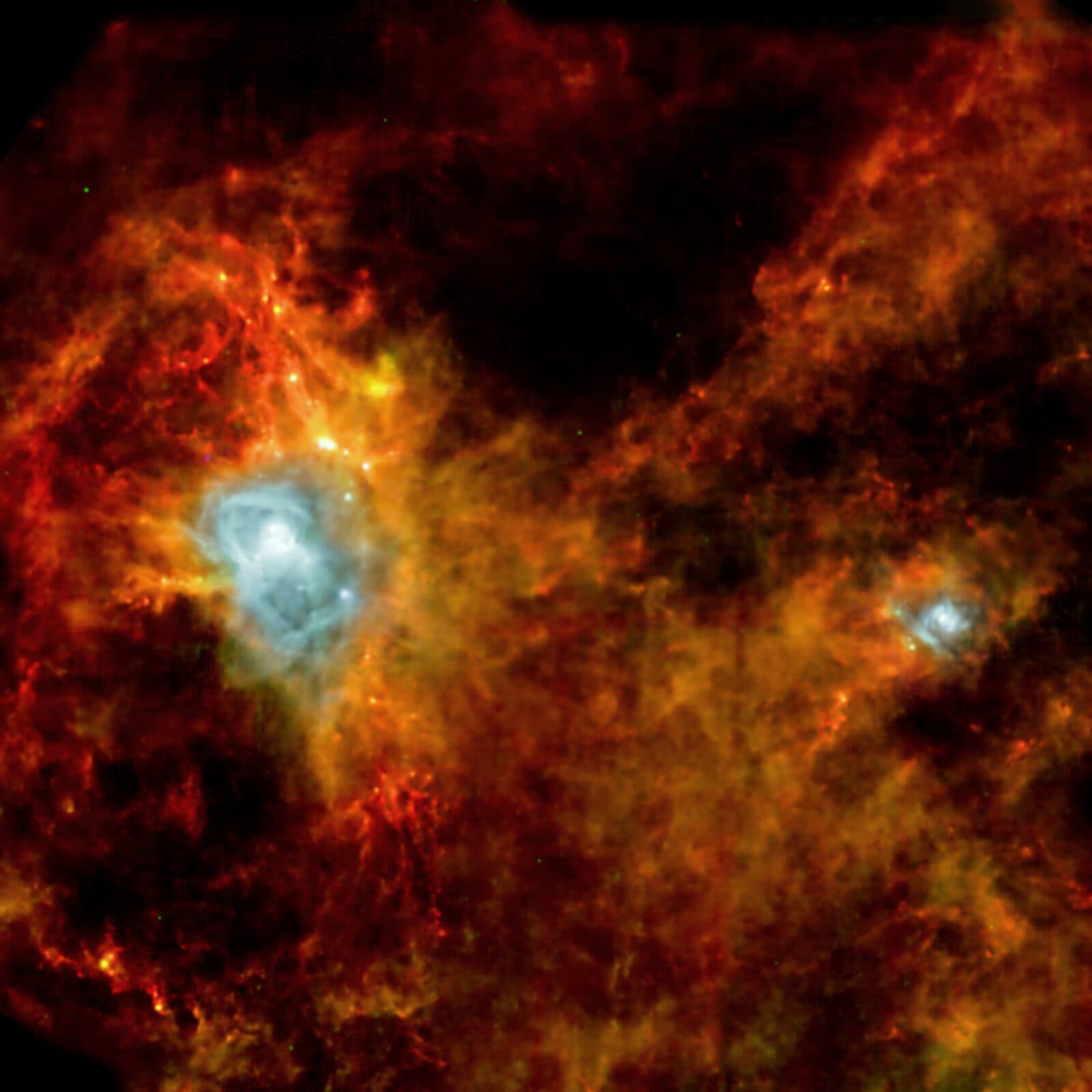On the Origins of Behemoth Stars
by Adam Hadhazy
High-mass stars have major impacts on their galactic environs and on the emergence of life. How these hulking stars themselves come to be, however, is not yet fully understood.

The Author
The stars have inspired humans since time immemorial. The majesty and mystery of points of light burning bright overhead are woven panculturally into mythologies and art. The modern era's scientific insights have ironically only deepened humanity's connection to these remote, luminous balls of ionized gas. Our origins, it has turned out, are inextricably linked to the origins of stars themselves. Their stellar lives, spent converting simple hydrogen into heavier chemical elements required for biochemistry, are a prerequisite for the lives of anything else.
Ke Wang, an assistant professor at the Kavli Institute for Astronomy and Astrophysics (KIAA) at Peking University, feels this profound connection in his studies of star formation.
We are all literally made of stardust—the elements produced from nuclear fusion within stars. Star formation is a bridge connecting us to the universe.
Ke Wang

For his research, Wang focuses on enhancing our understanding of the formation of high-mass stars which, in keeping with their various stellar superlatives, also have an outsized impact on their host galaxies.
Despite comprising less than a tenth of a percent of all "living" stars (that is, stars that are not remnant states of other stars), stars with masses of more than eight times that of our sun certainly make their presences known. For starters, because they are the hottest and brightest types of stars, massive stars produce much of the light—in the form of particles called photons—that travels across vast cosmic expanses to Earth. Massive stars accordingly dominate our view of the universe and the information we receive about it.
"Massive stars are so luminous and powerful that nobody can ignore them," says Wang. "When we observe a galaxy beyond our own, most photons—therefore information—that reach our telescopes are from massive stars."
After living short stellar lives of several million years, versus the many eons of their wee stellar brethren, massive stars explode as supernovae—stupendous blasts that temporarily outshine whole galaxies and strew heavy elements throughout space. Those elements are important not just biologically, but also technologically. What's more, the blast waves sent out by supernovae influence the formation of other, mediocre, planet-hosting stars like the sun.
"[Massive stars] dominate the evolution of galaxies by their tremendous feedback in the form of supernovae," Wang says.
In general, high-mass stars form the same as other, lesser stars: from the gravitational collapse of great clouds of gas and dust into compressed, hot, fusion factories. Recent findings with more powerful telescopes are showing that the pathway to stardom is not so straightforward and tidy, though, with the roles of gas turbulence and magnetic fields still poorly constrained, especially so for behemoth stars.
"Think of star formation as a one-to-many boxing game," says Wang. "Gravity has to fight (usually) alone against thermal pressure, turbulence, and magnetic fields. Only when gravity wins all the round of matches can materials collapse and form a star."
Researchers are getting better, deeper looks into the dense, dusty, gaseous, light-obscuring clouds where stars form en masse to help resolve these quandaries. Wang points to the contributions in this regard made by new generations of observatories such as the Atacama Large Millimeter/submillimeter Array (ALMA) in Chile, the largest astronomical project to date, and the Five-hundred-meter Aperture Spherical Telescope (FAST) in China, the largest single-dish radio telescope on Earth.
Overall, the origin stories for stars in the heaviest weight class, so to speak, are not as fleshed out as those for sun-like stars and the commonest, low-mass stars, called red dwarfs, that make up almost 80% of all stars. Because of the massive stars' roles in seeding the elements necessary for life, as well as the emergence of other stars and, in turn, planets, Wang hopes to eventually tell these stars' tale in full.
"[Massive stars] are so important in our galactic ecosystem and we still don't know how they form," says Wang. "We cannot understand how our galaxy or the universe work without knowing how massive stars form."